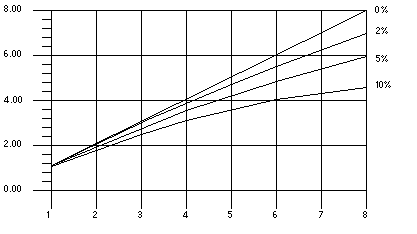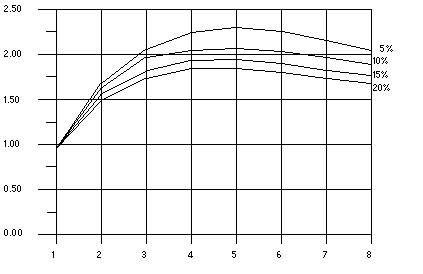| Skip Navigation Links | |
| Exit Print View | |

|
Oracle Solaris Studio 12.3: C User's Guide Oracle Solaris Studio 12.3 Information Library |
| Skip Navigation Links | |
| Exit Print View | |

|
Oracle Solaris Studio 12.3: C User's Guide Oracle Solaris Studio 12.3 Information Library |
1. Introduction to the C Compiler
2. C-Compiler Implementation-Specific Information
3.1 Overview of Parallelization
3.2.1 Handling OpenMP Runtime Warnings
3.2.3 Using restrict in Parallel Code
3.3 Data Dependence and Interference
3.3.1 Parallel Execution Model
3.3.2 Private Scalars and Private Arrays
3.5 Load Balance and Loop Scheduling
3.5.1 Static or Chunk Scheduling
3.7 Aliasing and Parallelization
3.7.1 Array and Pointer References
7. Converting Applications for a 64-Bit Environment
8. cscope: Interactively Examining a C Program
A. Compiler Options Grouped by Functionality
B. C Compiler Options Reference
C. Implementation-Defined ISO/IEC C99 Behavior
E. Implementation-Defined ISO/IEC C90 Behavior
H. Oracle Solaris Studio C: Differences Between K&R C and ISO C
If the compiler does not parallelize a portion of a program where a significant amount of time is spent, then no speedup occurs. . For example, if a loop that accounts for five percent of the execution time of a program is parallelized, then the overall speedup is limited to five percent. However, any improvement depends on the size of the workload and parallel execution overheads.
As a general rule, the larger the fraction of program execution that is parallelized, the greater the likelihood of a speedup.
Each parallel loop incurs a small overhead during startup and shutdown. The start overhead includes the cost of work distribution, and the shutdown overhead includes the cost of the barrier synchronization. If the total amount of work performed by the loop is not big enough then no speedup will occur. In fact, the loop might even slow down. If a large amount of program execution is accounted by a large number of short parallel loops, then the whole program may slow down instead of speeding up.
The compiler performs several loop transformations that try to increase the granularity of the loops. Some of these transformations are loop interchange and loop fusion. If the amount of parallelism in a program is small or is fragmented among small parallel regions, then the speedup is usually less.
Scaling up a problem size often improves the fraction of parallelism in a program. For example, consider a problem that consists of two parts: a quadratic part that is sequential, and a cubic part that is parallelizable. For this problem, the parallel part of the workload grows faster than the sequential part. At some point the problem will speed up unless it runs into resource limitations.
Try some tuning and experimentation with directives, problem sizes, and program restructuring in order to achieve the most benefit from parallel C.
Fixed problem-size speedup is generally governed by Amdahl’s law, which simply says that the amount of parallel speedup in a given problem is limited by the sequential portion of the problem.The following equation describes the speedup of a problem where F is the fraction of time spent in sequential region and the remaining fraction of the time is spent uniformly among P processors. If the second term of the equation drops to zero, the total speedup is bounded by the first term, which remains fixed.
The following figure illustrates this concept diagrammatically. The darkly shaded portion represents the sequential part of the program, and remains constant for one, two, four, and eight processors. The lightly shaded portion represents the parallel portion of the program that can be divided uniformly among an arbitrary number of processors.
Figure 3-3 Fixed Problem Speedups

As the number of processors increases, the amount of time required for the parallel portion of each program decreases whereas the serial portion of each program stays the same.
In reality, however, you might incur overheads due to communication and distribution of work to multiple processors. These overheads might not be fixed for arbitrary numbers of processors used.
The following figure illustrates the ideal speedups for a program containing 0%, 2%, 5%, and 10% sequential portions. No overhead is assumed.
Figure 3-4 Amdahl's Law Speedup Curve

A graph that shows the ideal speedups for a program containing 0%, 2%, 5%, and 10% sequential portions, assuming no overhead. The x-axis measures the number of processors and the y-axis measures the speedup.
Once the overheads are incorporated in the model, the speedup curves change dramatically. For the purposes of illustration, assume that overheads consist of two parts: a fixed part that is independent of the number of processors, and a non-fixed part that grows quadratically with the number of the processors used:

The fraction one over S equals one divided by the quantity of F plus the quantity one minus the fraction F over P end of quantity plus K sub one plus K sub two times P squared end quantity.
In this equation, K1 and K2 are some fixed factors. Under these assumptions, the speedup curve is shown in the following figure. Note that in this case, the speedups peak out. After a certain point, adding more processors is detrimental to performance.
Figure 3-5 Speedup Curve With Overheads

The graph shows that all programs reach the greatest speedup at five processors and then lose this benefit as up to eight processors are added. The x-axis measures the number of processors and the y-axis measures the speedup.
Amdahl's law can be misleading for predicting parallel speedups in real problems. The fraction of time spent in sequential sections of the program sometimes depends on the problem size. That is, by scaling the problem size, you might improve the chances of speedup, as shown in the following example..
Example 3-12 Scaling the Problem Size Might Improve Chances of Speedup
/*
* initialize the arrays
*/
for (i=0; i < n; i++) {
for (j=0; j < n; j++) {
a[i][j] = 0.0;
b[i][j] = ...
c[i][j] = ...
}
}
/*
* matrix multiply
*/
for (i=0; i < n; i++) {
for(j=0; j < n; j++) {
for (k=0; k < n; k++) {
a[i][j] = b[i][k]*c[k][j];
}
}
}
Assume an ideal overhead of zero and that only the second loop nest is executed in parallel. For small problem sizes (that is, small values of n), the sequential and parallel parts of the program are not so far from each other. However, as n grows larger, the time spent in the parallel part of the program grows faster than the time spent in the sequential part. For this problem, increasing the number of processors as the problem size increases is beneficial.